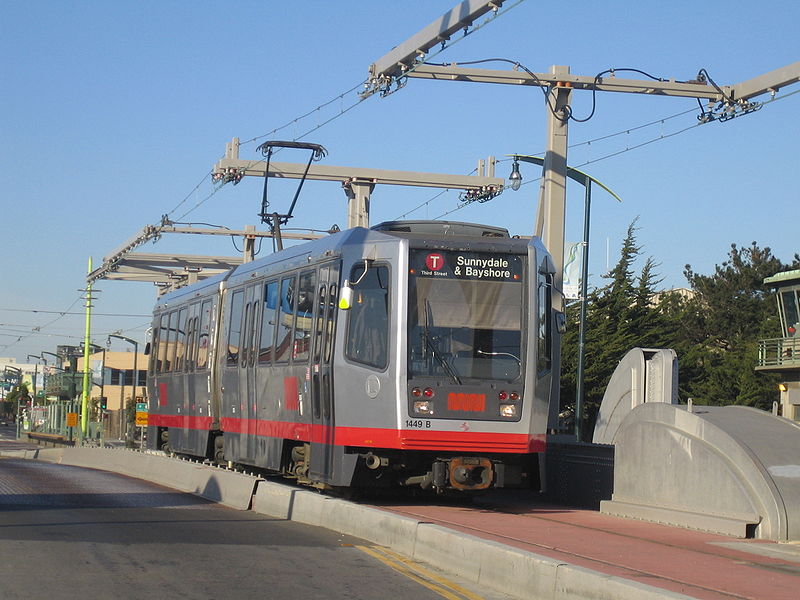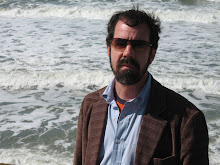1.) Intercity/Interstate High Speed Rail

This is the highest technology, cutting-edge rail transport. I believe we should seriously be looking at nuclear energy. I know this is opposed by many in the environmental/green movement, and I think it is unfortunate. Our energy needs are increasing, and in order to grow the economy and continue to provide energy equity for all, I believe nuclear energy is our future. Wind, wave and solar all have their place and they should most certainly be utilized, but in order to truly break our dependence upon oil, nuclear is the only way to go presently. Nuclear energy does not have to pose a threat to life on the planet. Eventually, given proper funding and research, we can harness nuclear fusion which will indeed not only provide stunning amounts of energy, but it is inherently clean and totally renewable. Another astounding area of research should be magnetic levitation, or superconducting maglev trains. Such trains could maintain speeds up to 350 mph. At such speeds, most domestic flights would become unnecessary, thereby eliminating even more destruction to our environment and dependence on oil. One could travel from San Francisco to Los Angeles within an hour and a half, including stops. A trip from coast to coast could be made in twelve hours with stops along the way. One could say that such is unreasonable considering the fact that a transcontinental flight can be made in half the time, however, we are talking door to door here. As it now stands, to make such a trip, one is required to leave his home approximately two hours before his flight, and then he needs to either book a shuttle, take a cab or train to the city center which could easily occupy another hour, and there are generally delays or connecting flights, so even in the best case scenario such a flight would be marginally faster. Yet the maglev train could shuttle you in true comfort and pamper your tastes for luxury along the way. Not to mention, they don't generally fall out of the skies!
2.) Regional Commute Rail (Heavy Rail)

Why not talk about BART? It has saved our ass time and time again. It is a pretty good system, and it would be even more successful if the politicos would just let it. There are three big issues I have with BART however.
A.) It does not link the entire region. It should logically be extended down the peninsula and up to the north bay.
B.) The measured fares are crazy! BART should be entirely subsidized and made "free" to all passengers.
C.) It does not run 24 hours. This just makes no sense at all.
If our politicians could get off their collective ass and implement those three things, we'd be looking at a real alternative to automobiles.
3.) Inner City Light Rail

SFMTA could certainly use some help. As a resident of San Francisco, I can honestly say it sucks. Most of the time I choose to either walk, bike or cab to my destinations. Fortunately, the size and density of this city allows me to do so. MUNI does little to actually assist in my transportation needs. The busses and cars are almost always in disrepair, they run erratically at best and they are almost always driven by people who apparently hate their jobs. And of course when one finally does get on board, he would be fortunate to find a seat. All that said, there are a few lines that work well and tend to run regularly. My solutions for MUNI are as follows:
A.) Make it an employee-owned company with plenty of subsidies from the city.
B.) Eliminate fare collection altogether.
C.) Replace some existing bus lines with light rail.
D.) Replace existing diesel coaches with electric ones, namely the 12 Folsom that runs outside my flat.
So there we have it, a means at eliminating the need for automobile ownership, improving transit, building the economy, increasing productivity, and protecting the environment – and essentially doing so with existing infrastructure.


7 comments:
My first issue with nuclear power is what happens to the waste produced by the plant. Even if you bury it under the ocean it has a huge half-life and the containers will eventually fall apart.
Secondly, the consequences of nuclear fall-out seem rather extreme unless you like your hair falling out...tease tease.
If you have not figured out who this is, "you are Fired!"
My hair is already falling out, sister!
The problem with BART and future expansion of it is that it is a system built on proprietary, non-standard technology, which makes it hugely expensive to build. There are better alternatives, e.g. Caltrain Metro East instead of SJ-BART.
So, I guess that means you are a-ok with the consequences of fallout...heehee. That's terrible of me to tease like that.
In Toronto, the buses are being modified to make them hybrids. The system is fairly reliable but so many people use it, it's quite crowded. You have to leave early to make any appointments on time and only downtown is it feasible to walk to places.
Also, the current system is not reliable for people in our situation who need accessibility. There are elevators but they often are out of service. The bus for wheelchairs won't guarantee a drop-off time so you might have to wait hours.
I can't see myself attaching the wheelchair to my bike...
love, ya sista
Lazytom,
You make two very apt points. Commute rail already exists to SJ, and BART is proprietary technology. Mind you, I am solely using existing service as an example. Nonetheless, BART is in place and has been running virtually without a hitch for 35 years. The problem with Caltrain, indeed the problem throughout the Bay Area, is that there are plenty of good systems that run from one point to another, but nothing is unified. Such as it stands, it requires transfer after transfer from one system to another, and fare after fare. Such a system is unwieldy and and expensive for riders, and as a result, many opt out and drive. I do love Caltrain though – I lived in San Mateo for a year and commuted by rail, and I must say the trains are quite comfortable and stress-free. They also run on time. In my estimation, the fares are a bit steep however.
Wolfmaiden,
Accessibility is a huge issue. I am not saying that everyone need abandon their cars immediately. Obviously, there are exceptions. Personal transport is not likely going to disappear in the future, nor should it – at least not entirely. However, by designing cities properly, and redesigning existing cities & neighbourhoods to be car-free in zones, and pedestrian friendly with multi-use centers, much of our transportation needs can be negated. I'm simply stating that the automobile has its place – namely outside densely populated urban centers. It is incredibly frustrating how many buses do not have wheelchair accessibility. In this day and age, I think it is unforgivable.
Regarding nuclear energy, there already exists technology that can essentially "recycle" atomic "waste". Article here. There are also pebble bed reactors that cannot produce a meltdown. We must find a real alternative for petroleum, and presently this is the only thing that comes close to satisfying our energy needs. We cannot run away from science – this technology will not go away. Instead, we should embrace science and learn even more. We can never develop fusion reactors if we do not develop cleaner fission reactors first. Fusion energy is our panacea for an equitable energy future for all mankind.
The issue remains regarding the disposal of waste and the hazards of potential radiation being sent into the environment. Sure, perhaps there is less chance but don't forget Chernobyl. I think if this type of nuclear energy is to be used more often, there needs to be some more practical experience instead of just theory based ideas. Of course, practical experience necessitates building the reactors in the first place. Round and round we go.
In a city like San Francisco, accessibility becomes a bigger issue due to the geographical nature of the environment. Large hills are not wheelchair friendly. If you cut off cars or wheelchair accessible vans, then these people become trapped in their homes. What does one do then?
Nuclear fission, when done in stages can virtually eliminate nuclear waste. Currently, much of what is called "waste" has 95 percent of its energy potential still locked up inside of it. Fission is "dirty", meaning there will be radioactive waste, but the hazards to the environment are very small compared to the continued combustion of fossil fuels. Nuclear is also the only available technology that can provide the levels of energy we currently require, and the only technology that can provide for our ever increasing consumption of energy. Even when looking at curtailing consumption, strict conservation and renewable "green" energy such as wind and solar, our energy needs are woefully unfulfilled by the current model unless we can quite literally replace fossil fuels. The only way we can begin to address the inherent problems with dirty nuclear reactors, is to continue research into them, and the only way we can ever harness clean nuclear energy (fusion) is to do the same. There is no perfect world, and I really feel we cannot afford to abandon science and turn the clock back centuries, nor should we run from our discoveries. The only way we could ever go "green" is to let billions of people starve to death. That in my view is unacceptable. Fusion energy truly is a panacea for energy equity. I am not an utopian, I am a realist, but the potential for a world that learns to harness fusion energy is virtually unlimited. We quite literally could travel to the stars. And that is where we should be headed, indeed we will be required to do so to ensure we survive as a race.
Regarding accessibility, San Francisco can be very difficult for people who are wheelchair bound to negotiate. However, the city has also made great strides at improving accessibility. Most buses allow wheelchairs, and so do most light rail lines. However, if you read carefully the proposals being made, you will see that car-free cities would actually be much friendlier to the physically disabled. And remember, even in such communities there will be service vehicles (ideally with electric motors and limited to speeds below 50 kph). The ideal building height limit of four storeys would generally not provide lifts, but preference would be given to people with such requirements so that they may live on the ground floors. Again, this is not a recipe for a perfect world, since in a perfect world nobody would be in a wheelchair. Yet I think if you study the proposals you will see that it actually opens up accessibility rather than limiting it, and generally negates the need for such long trips as is oftentimes the case in our auto-centric cities and suburban sprawl.
Post a Comment